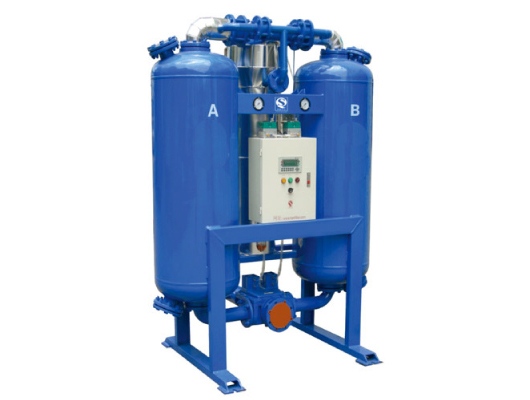-
Call
-
Whatsapp
9825014048
-
Location


Heatless Air Dryer
Heatless Air Dryer
Compressed air is essential to various industries, including electrical equipment, devices, and processes. However, moisture in compressed air can cause a number of problems, such as equipment damage, reduced productivity, and even manufacturing defects.
Many companies are turning to air compressors to address these issues, and along with it, air dryers without heat have emerged as a popular option. This article explores Heatless Air Dryers, how they work, their benefits, and why they are important to optimizing your compressed air system.
Stainless air dryers, also known as dry air dryers, are compressed air cleaning equipment designed to remove moisture and impurities from compressed air. They use a drying agent, usually functional alumina or silica gel, to absorb vapours and exhaust gases, dryer dry and free from contamination and ensure that.
How Stainless Air Dryers Work
- Condensation: Compressed air enters the drying chamber, and the dry material condenses. Hydrophobic properties have a high affinity for water molecules, trapping them in the structure.
- Absorption: The dryer will continue to absorb water until it reaches saturation. At this point, the user enters the restoration phase.
- Regeneration: In the regeneration phase, a portion of the dry air is diverted to a separate chamber containing a full desiccant. This dry air flows through the dryer, releasing trapped water.
- Suction Air: The moist air in the regeneration chamber comes from the dryer. This air carries the water away, and the dryer is ready to start drying it again.
Advantages of Drying Without Heat
- Moisture Control: The main advantage of non-combustible air dryers is their ability to remove moisture from compressed air effectively. This waterproofing prevents corrosion of air tools, prolongs their life, and improves the quality of the products in applications such as painting and food processing.
- Improved Efficiency: Dry air is more efficient for air tools and equipment, increasing productivity and reducing energy consumption. Efficiency can lead to cost savings.
- Environmental: Air dryers contribute to environmental sustainability by reducing airborne water and oil contamination. It is especially important in industries that have strict environmental regulations.
- Manufacturing Quality: In industries such as pharmaceuticals and electronics, maintaining dry air is essential to ensure product quality and avoid water-induced defects. Manufacturing many applications: Sterile air dryers can be used in a wide range of industries, from manufacturing and automotive to healthcare and electronics.


FAQ

Frequently Ask Questions
The frequency of dryer replacement depends on factors such as dryer configuration, operating conditions, and dryer type. In general, drywall may need to be replaced every 1 to 5 years.
Yes, the size and capacity of stainless steel air dryers makes them suitable for small businesses and high-efficiency industrial applications
Routine maintenance includes checking and replacing the dryer, checking valves and sensors, and ensuring proper ventilation. The frequency of maintenance depends on the particular dryer and how it is used.
Yes, some vacuum dryers are designed for use in hazardous environments and meet safety standards.
Although the recycling process requires some energy, the overall energy consumption is relatively low compared to the gains in equipment efficiency and process efficiency

